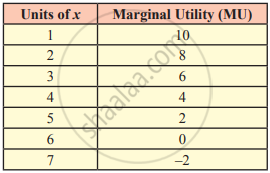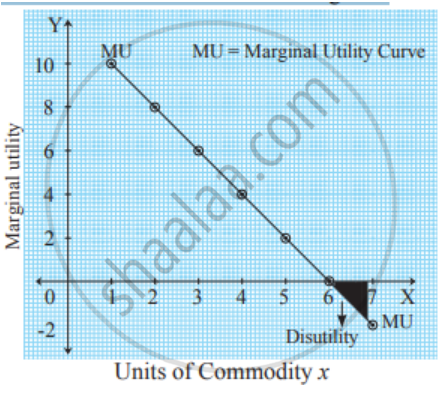Topics
Introduction to Micro and Macro Economics
Micro Economics
Macro Economics
Utility Analysis
- Utility
- Types of Utility
- Concepts of Utility
- Relationship Between Total Utility and Marginal Utility
- Law of Diminishing Marginal Utility
- Assumptions of Diminishing Marginal Utility
- Exceptions to the Law of Diminishing Marginal Utility
- Criticisms of the Diminishing Marginal Utility
- Significance of the Diminishing Marginal Utility
- Relationship Between Marginal Utility and Price
- Diminishing Marginal Utility
Demand Analysis
Elasticity of Demand
Supply Analysis
Forms of Market
Index Numbers
National Income
- Concept of National Income
- Features of National Income
- Circular Flow of National Income
- Different Concepts of National Income
- Methods of Measurement of National Income
- Output Method/Product Method
- Income Method
- Expenditure Method
- Difficulties in the Measurement of National Income
- Importance of National Income Analysis
Public Finance in India
Money Market and Capital Market in India
- Financial Market
- Money Market in India
- Structure of Money Market in India
- Organized Sector
- Reserve Bank of India (RBI)
- Commercial Banks
- Co-operative Banks
- Development Financial Institutions (DFIs)
- Discount and Finance House of India (DFHI)
- Unorganized Sector
- Role of Money Market in India
- Problems of the Indian Money Market
- Reforms Introduced in the Money Market
- Capital Market
- Structure of Capital Market in India
- Role of Capital Market in India
- Problems of the Capital Market
- Reforms Introduced in the Capital Market
Foreign Trade of India
- Internal Trade
- Foreign Trade of India
- Types of Foreign Trade
- Role of Foreign Trade
- Composition of India’s Foreign Trade
- Direction of India’s Foreign Trade
- Trends in India’s Foreign Trade since 2001
- Concept of Balance of Payments (BOP)
Introduction to Micro Economics
- Features of Micro Economics
- Analysis of Market Structure
- Importance of Micro Economics
- Micro Economics - Slicing Method
- Use of Marginalism Principle in Micro Economics
- Micro Economics - Price Theory
- Micro Economic - Price Determination
- Micro Economics - Working of a Free Market Economy
- Micro Economics - International Trade and Public Finance
- Basis of Welfare Economics
- Micro Economics - Useful to Government
- Assumption of Micro Economic Analysis
- Meaning of Micro and Macro Economics
Consumers Behavior
Analysis of Demand and Elasticity of Demand
Analysis of Supply
Types of Market and Price Determination Under Perfect Competition
- Market
- Forms of Market
- Market Forms - Duopoly
- Equilibrium Price
Factors of Production
- Factors of Production - Land
- Factors of Production: Labour
- Factors of Production: Capital
- Factors of Production - Feature of Capital
- Factors of Production - Organisation
Introduction to Macro Economics
- Features of Macro Economic
- Importance of Macro Economic
- Difference Between Mirco Economic and Macro Economic
- Allocation of Resource and Economic Variable
National Income
Determinants of Aggregates
- Total Demand for Good and Services
- Concept of Aggregate Demand and Aggregate Supply
- Consumption Demand
- Investment Demand
- Government Demand
- Foreign Demand
- Difference Betweeen Export and Import
- Effect of Population of Consumption Expediture
- Types of Investment Expenditure
- Micro Eco-Equilibrium
Money
- Meaning of Money
- Type of Money
- Primary Function
- Secondary Functions
- Standard of Deferred Payment
- Standard of Transfer Payment
- Money - Store of Value
- Concept of Barter Exchange
- Difficulties Involved in the Barter Exchange
- Monetary Payments
- Concept of Good Money
Commercial Bank
Central Bank
- Definition - Central Bank
- Central Bank Function - Banker's Bank
- Central Bank Function - Controller of Credit
- Monetary Function of Central Bank
- Non Monetary Function of Central Bank
- Method of Credit Control - Quantitative
- Repo Rate and Reverse Repo Rate
- Central Bank Function - Goverment Bank
Public Economics
- Introduction of Public Economics
- Features of Public Economics
- Meaning of Government Budget
- Objectives of Government Budget
- Features of Government Budget
- Public Economics - Budget (1 Year)(1 April to 31 March)
- Types of Budget
- Taxable Income
- Budgetary Accounting in India
- Budgetary Accounting - Consolidated , Contingency and Public Fund
- Components of Budget
- Factor Influencing Government Budget
Notes
Law of Diminishing Marginal Utility :
Introduction :
This law was first proposed by Prof. Gossen but was discussed in detail by Prof. Alfred Marshall in his book ‘Principles of Economics’ published in 1890.
The law of diminishing marginal utility is universal in character.
Law of diminishing marginal utility was first formulated by Herman Gossen (1854) who stated:
“The magnitude of one and the same satisfaction, when we continue to enjoy it without interruption continually decreases until satisfaction is reached.”
Marshall (1920, 1961) continued this line of thinking, giving a more technical definition. He stated that the additional benefit which a person derives from a given increase of his stock of a thing diminishes with every increase in the stock that he already has.
Statement of the Law :
According to Prof. Alfred Marshall, “Other things remaining constant, the additional benefit which a person derives from a given increase in his stock of a thing, diminishes with every increase in the stock that he already has.”
In other words, marginal utility that any consumer derives from successive units of a particular commodity goes on diminishing as his or her total consumption of that commodity increases. In short, the more of a thing you have, the less you want to have more of it.
Some uses of diminishing marginal utility:
Basis for Progressive Taxation:
-
The law of diminishing marginal utility is one of the fundamental principles in public finance. The law serves as the basis for progressive taxation.
-
Adam Smith explained canons of taxation in his book ‘Wealth of Nations’. One of the canons of taxation is ‘Ability to Pay’. This means that taxes should be imposed according to the ability of people to pay.
-
According to Prof. Pigou, the marginal utility of money for a poor person is higher than that for a rich person. This is so, because a poor person possesses little money; therefore, the utility derived from each unit of money is huge. This implies that rich people are able to pay more as taxes than poor people are.
-
This concept leads to progressive taxation system, which imposes heavier tax burden on the rich. This is one of the very important practical applications of the law of diminishing marginal utility.
Water – Diamond Paradox:
-
The principle of diminishing marginal utility is beneficial to understand the difference between value-in-use and value-in-exchange.
-
For instance, let us consider two commodities – water and diamond. Water is essential for our survival (value-in-use) but it is not costly (no or little value-in-exchange). On the contrary, diamonds are useful although not a necessity (no value-in-use) but they are very costly (high value-in-exchange).
-
Water is abundant but diamonds are scarce and hence they possess a very high marginal utility.
-
This scenario is often referred to as water - diamond paradox.
Table below explains the Law of Diminishing Marginal Utility.

The table shows that marginal utility keeps on diminishing with increase in consumption, further it becomes zero and then negative.

Explanation of the Diagram :
In the above diagram, units of commodity x are measured on X axis and marginal utility is measured on Y axis. Various points of MU are plotted on the graph as per the given schedule. When the locus of all the points is joined, MU
curve is derived.
MU curve slopes downwards from left to right which shows that MU goes on diminishing with every successive increase in the consumption of a commodity. When MU becomes zero, MU curve intercepts the X axis. Further consumption of a commodity brings disutility (negative utility) which is shown by the shaded portion in the diagram.
